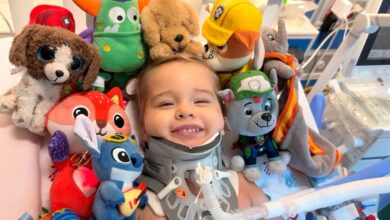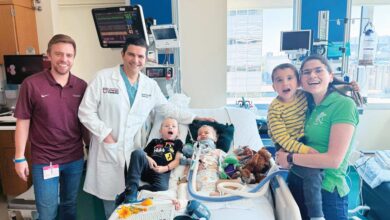First Human Bladder Transplant Performed at UCLA Health

A historic surgery, the result of years of research, opens the door for improved treatment of non-functioning bladders. A UCLA Health surgical team has performed the first-in-human bladder transplant, marking a major advancement in organ transplantation.
The procedure was successfully completed at Ronald Reagan UCLA Medical Center on May 4, 2025. The team was led by Dr. Nima Nassiri, a Urologic Transplant Surgeon and Director of the UCLA Vascularized Composite Bladder Allograft Transplant Program, with assistance from Dr. Inderbir Gill, founding executive director of USC Urology.
“Bladder transplantation has been Dr. Nassiri’s principal academic focus since we recruited him to the UCLA faculty several years ago,” said Dr. Mark Litwin, Chair of UCLA Urology. “It is incredibly gratifying to see him take this work from the laboratory to human patients at UCLA, which operates the busiest and most successful solid-organ transplant program in the western United States.”
“This first attempt at bladder transplantation has been over four years in the making,” Dr. Nima Nassiri said. “For the appropriately selected patient, it is exciting to be able to offer a new potential option.”
The patient had lost most of his bladder during a tumor removal, leaving the remainder too small and compromised to work. Both of his kidneys were subsequently removed due to renal cancer in the setting of pre-existing end-stage kidney disease. As a result, he was on dialysis for seven years. The biggest risks of organ transplantation are the body’s potential rejection of the organ and side effects caused by the mandatory immune suppressing drugs given to prevent organ rejection.
“Because of the need for long-term immunosuppression, the best current candidates are those who are already either on immunosuppression or have an imminent need for it,” Dr. Nassiri said.
Dr. Nassiri, previously a resident at the Keck School of Medicine of USC, and now a UCLA Health assistant professor of urology and kidney transplantation, worked with Dr. Gill to develop the surgical technique, design trials, and secure approvals.
They collaborated for years to prepare for this milestone. Many pre-clinical procedures were conducted at USC and OneLegacy, Southern California’s organ procurement organization.
The donor bladder and kidney were recovered at OneLegacy. All parts of the procedure, including recovery, surgery, and monitoring, followed rigorous clinical and research standards. During the surgery, the team first transplanted the donated kidney, followed by the bladder. They used a technique they developed to connect the new kidney to the new bladder. The surgery lasted approximately eight hours.
“The kidney immediately made a large volume of urine, and the patient’s kidney function improved immediately,” Dr. Nassiri said. “There was no need for any dialysis after surgery, and the urine drained properly into the new bladder.”
Millions worldwide suffer from bladder dysfunction, with some experiencing terminal bladders that no longer function or cause ongoing complications like pain and infections. In severe cases, or after bladder removal, treatment options include using part of the patient’s intestine to form a urinary reservoir.
While these surgeries can be effective, they come with many short- and long-term risks that compromise a patient’s health such as internal bleeding, bacterial infection and digestive issues.
“A bladder transplant, by contrast, creates a more natural urinary reservoir and may avoid some of the risks tied to using the intestine,” said Dr. Nassiri.
As the first of its kind, the procedure carries unknowns, such as how the transplanted bladder will function over time and the extent of immunosuppression needed.
Bladder transplantation hasn’t been attempted before, partly due to the complex vascular structure of the pelvis and the technical difficulty. To prepare, Dr. Nassiri and Dr. Gill performed multiple practice surgeries at Keck Medical Center, including the first-ever robotic bladder retrievals and successful robotic bladder transplants in five recently deceased donors whose cardiac function was maintained via ventilator. They also conducted non-robotic trial runs at OneLegacy, collaborating with multidisciplinary teams to refine the technique.
At UCLA, the bladder and kidney transplantation programs are both housed within the Department of Urology, providing a unified system for evaluation, surgery and follow-up care.
This made UCLA uniquely equipped to perform the combined transplant, with the infrastructure, expertise, and support to manage the procedure and patient recovery from start to finish within one department.
The transplant was performed as part of a UCLA clinical trial, and Dr. Nassiri hopes to offer this procedure to more patients in the future.
UCLA Urology has long been a pioneer in transplantation, leading groundbreaking research in kidney transplantation and now, bladder transplantation.
For more information, please visit https://www.uclahealth.org/international-services/ or call +1 310-794-8759














